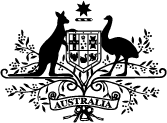It’s been some years since I did my nursing training and longer since I gave birth to my four children.
Maternity care has changed dramatically in the decades since I worked on the wards of the Austin Hospital and, for the most part, women in Australia have benefited enormously.
In 2023, most of us don’t think twice that we will be able to have healthy pregnancies and give birth to healthy babies.
But this just isn’t the case for everyone.
There remain stubbornly disproportionate statistics for Aboriginal and Torres Strait Islander mothers and their babies compared to non-Indigenous mothers and babies.
Low birth weight is almost twice as likely for Aboriginal and Torres Strait Islander babies.
Aboriginal and Torres Strait Islander parents want the same thing as any Australian parents want – happy, healthy children who can grow to reach their full potential.
But the long-term consequences of low birth weight on people, their families and the health system are significant. We know that low birth weight babies are more likely to die in infancy, develop chronic diseases and are especially at risk of developmental difficulties.
First Nations women living in remote areas and in the most disadvantaged communities are more than twice as likely to have gestational diabetes. This means having a high risk pregnancy, which can potentially lead to additional complications, miscarriage or stillbirth.
Despite the efforts and significant amounts of funding from successive governments, we have seen virtually no change in those shocking statistics.
The Closing the Gap target 2 aims to increase the proportion of Aboriginal and Torres Strait Islander babies with a healthy birthweight to 91 per cent by 2031.
Like many of the targets, we are not on track. And we’re just not going to get there doing business-as-usual.
I want to tell you why I’ll be voting Yes to the Voice to Parliament on the 14th of October.
As Assistant Minister for Health and Aged Care, and with the great privilege of being responsible for women’s health, I want to see the outcomes for Aboriginal families change.
I worked as a nurse for 20 years. I’ve seen the health system from all angles – on the wards, on the picket lines fighting for a stronger Medicare and now, in Government, building it.
What I can tell you is that health care doesn’t work without listening. Doctors and nurses get better results when they listen to their patients.
I think we all know that as patients we get better outcomes when we’re given the tools and resources to talk about what we’re experiencing and can advocate for ourselves.
I know from my time at the Australian Nursing and Midwifery Federation that the whole system works better when we engage with health workers on the ground who know intimately what communities need.
Aboriginal and Torres Strait Islander people face starkly different outcomes when it comes to health across the board.
If we keep doing the same thing we can expect the same results. It’s time to change how we tackle these problems so we get better results.
Communities have solutions to these problems. Governments, like doctors and nurses, always do better when we listen to them.
The Voice will mean that we can listen to their advice and make better decisions for the people that it affects. It’s that simple.
It will mean that all of our neighbours will have the best chance for themselves and their children to live long, healthy lives.
I believe that Australians understand that a new approach is needed. The Voice won’t fix these complex problems overnight – but by putting it in the Constitution it will have the independence and stability to give lasting advice beyond the day-to-day political cycle.
On 14 October we can all take a step together towards a better future – all we need to do is vote yes.
Media event date:
Date published:
Media type:
Opinion
Audience:
General public
